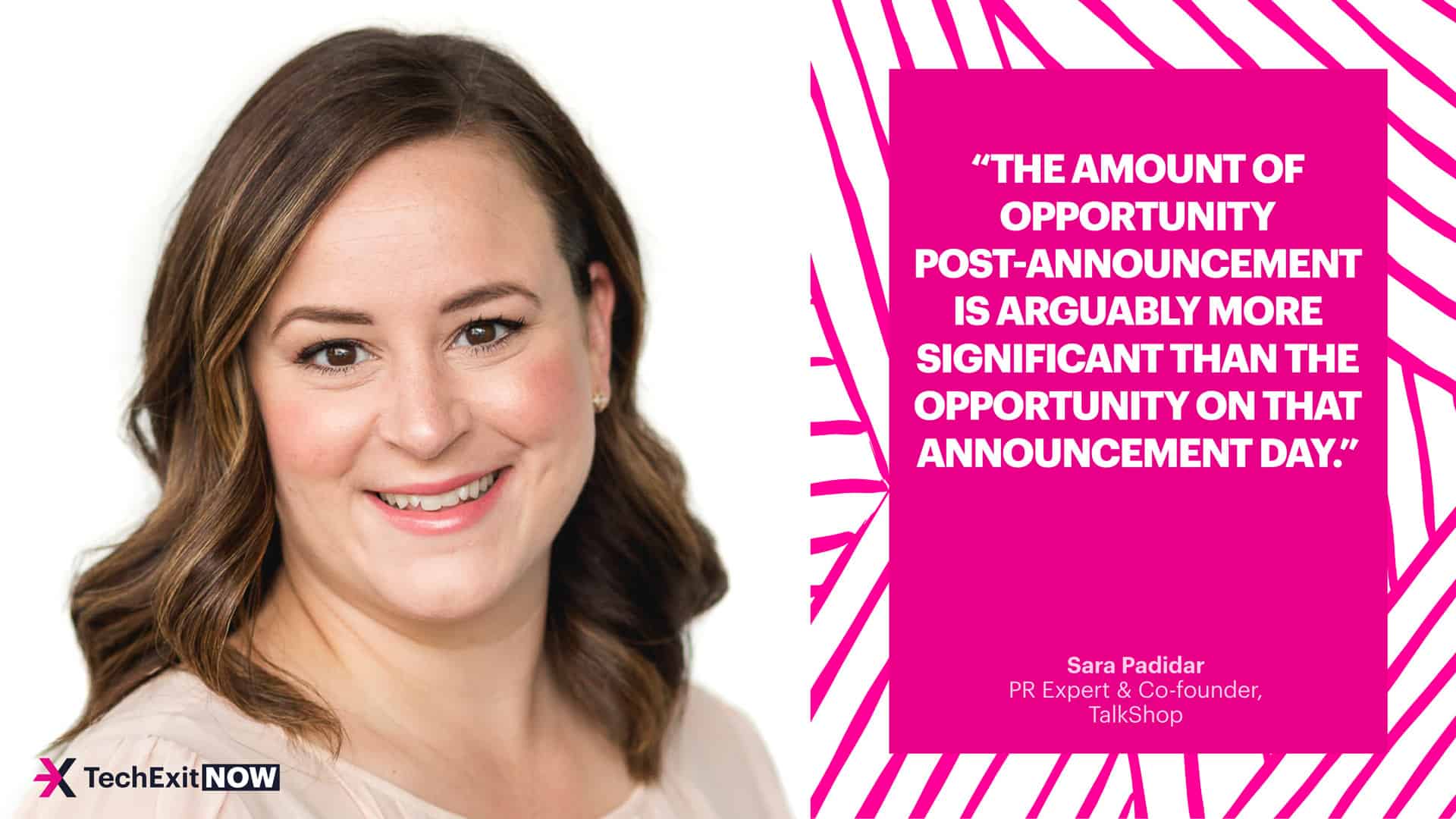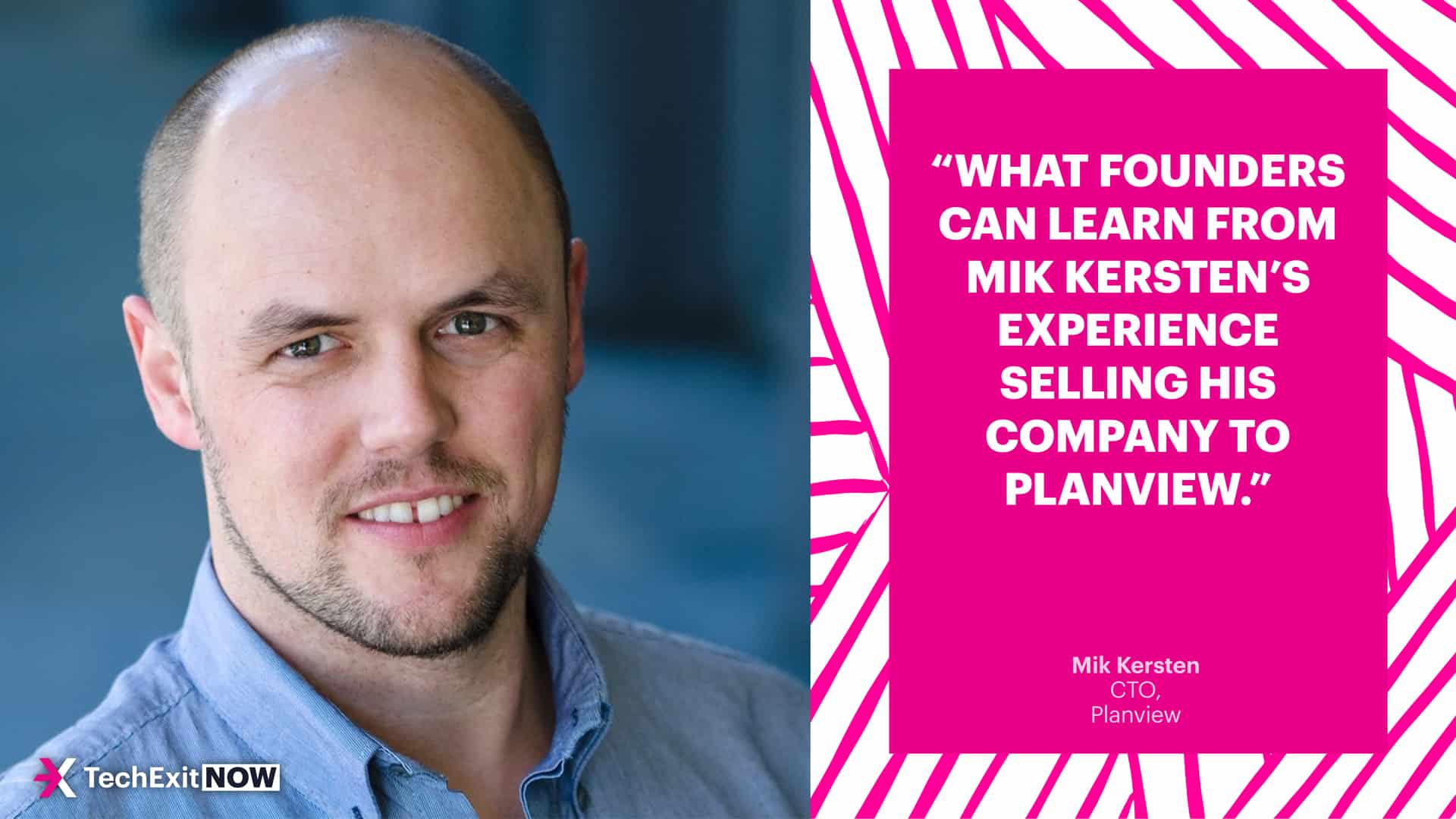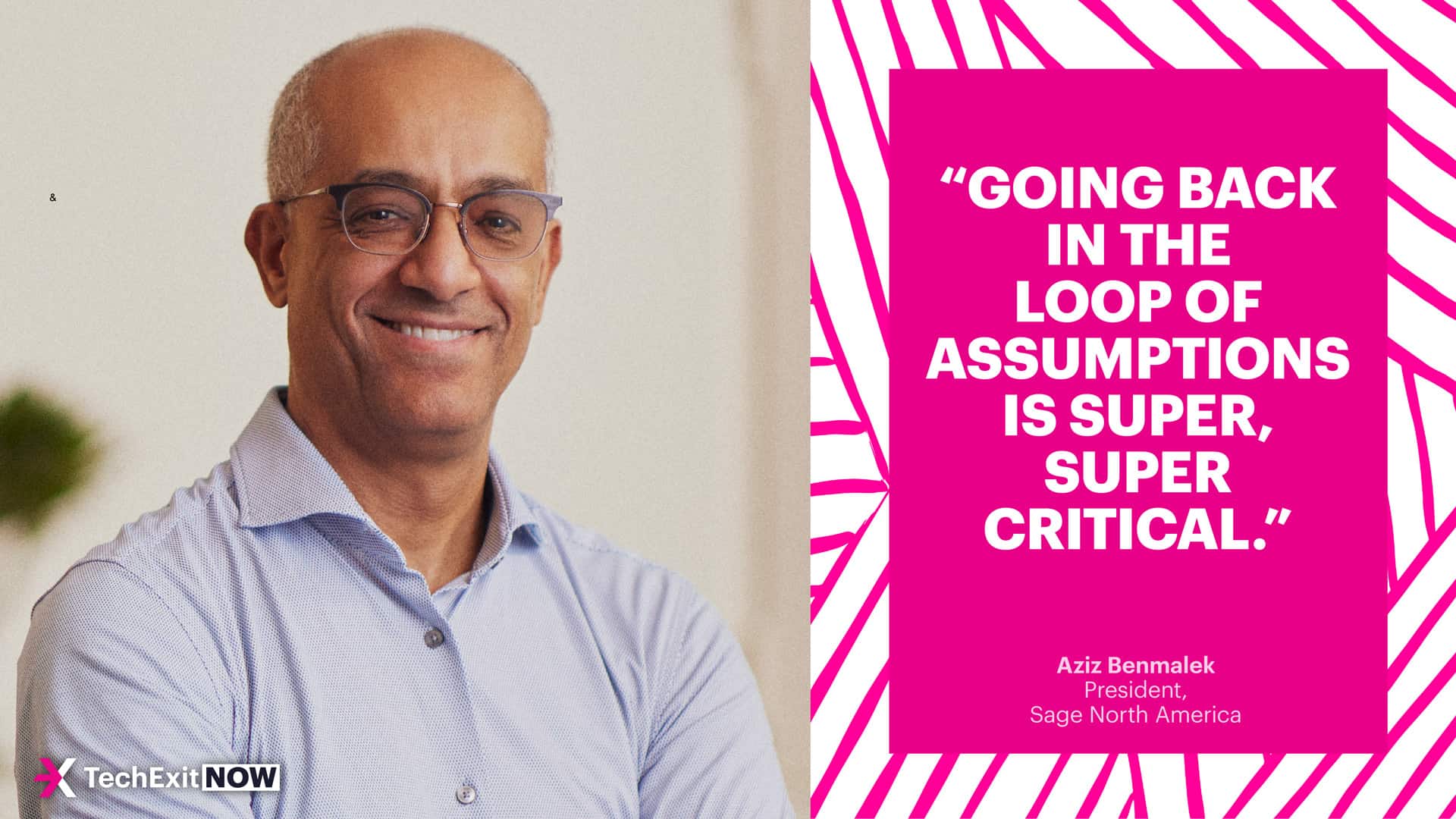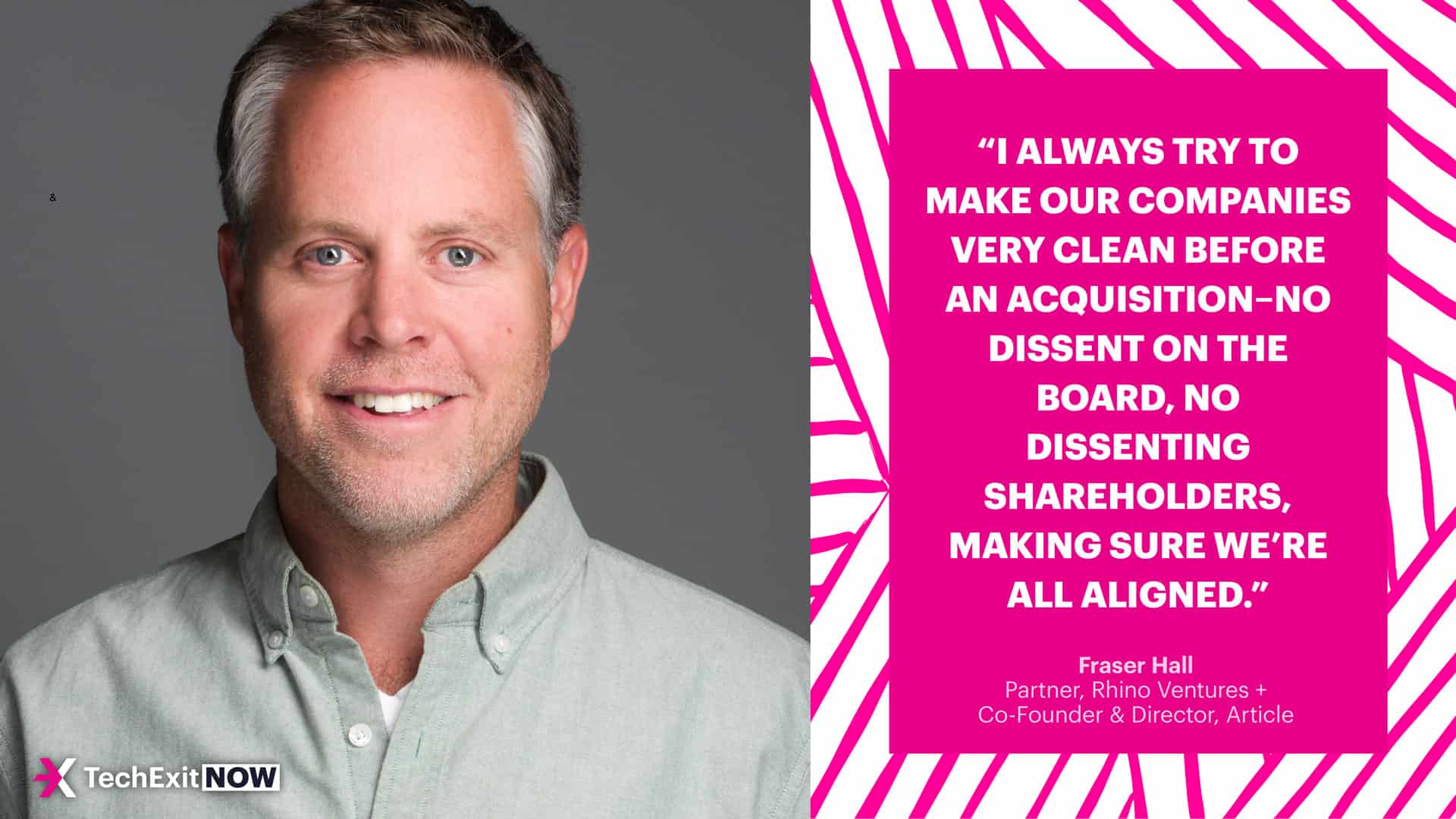3 Mistakes Founders Make With M&A-Focused Public Relations
Stefan Palios

If you sell your company and no one hears about it, does it matter? Of course, yes, but you’re missing out on some big potential impact. Speaking with TechExit.io, PR expert and co-founder of TalkShop, Sara Padidar, shared a few key mistakes founders make with M&A-focused public relations—and what to do instead.
Key takeaways:
- PR is more than just a big announcement—it’s about internal and external stakeholder communications.
- While you need to keep things confidential during an M&A process, you should still plan what you will say when you can talk openly.
- There is significant opportunity in telling stories beyond announcement day—keep some stories and resources for that.
Did you just buy a company? Or get acquired? Great! Get the PR announcement ready—you want to ensure outlets like TechCrunch, BetaKit, or the Globe and Mail find it appealing.
But you need to know the press coverage on announcement day is only one small part of M&A-focused public relations.
Speaking with TechExit.io, Sara Padidar, a co-founder and partner at TalkShop, explained how to avoid the three mistakes founders often make.
Key mistake 1: Forgetting that PR is about stakeholder communications
A big splash on announcement day can do wonders for your brand. But if you don’t focus on the whole communications package, you run the risk of angering the people who matter most.
Instead of thinking about PR as the big announcement and then everything else, Sara recommends looking at two pillars:
1. External: This is both the big announcement and how you will engage external stakeholders such as customers, vendors, and channel partners. In particular, you need to communicate how things might change for each group and what action, if any, you need them to take. This is also the opportunity to ensure consistent messaging about why the acquisition is taking place and the value it will bring.
“The external side is around that consistent story you want told,” said Sara.
2. Internal: A select few employees might know about the acquisition ahead of time, but most won’t know until the paperwork is signed. Regardless, Sara recommends telling employees before telling the media. From there, ensure you communicate the newly merged organization's mission and some employee processes on how the transition might look.
“It can mean smoother integration, better retention and engagement of teams, and just better overall sentiment of the team,” said Sara.
Key mistake 2: Thinking confidentiality means you don’t need to plan
Confidentiality is necessary during negotiations—you can’t suddenly start telling employees about an exciting acquisition prospect. However, this doesn’t mean you don’t have communications tasks to handle.
While conducting diligence and figuring out if the deal will move ahead, here are some tasks Sara said founders should be knocking off their to-do lists:
- Identify stakeholders: Both internal and external, who needs to be part of the diligence process and who needs to be informed when the acquisition is finalized?
- Decide on your story: Why are you selling or being acquired? What’s the combined company vision?
- Identify necessary tasks: Once the sale is finalized, what tasks–in what order–need to be completed?
“Because confidentiality is required, it's really tough to engage your team and engage your external stakeholders in the way that you typically would with other changes in your business,” said Sara. “But on the flip side, it provides you with lead time to prepare.”
Key mistake 3: Not thinking about long-tail opportunities
The press release and big announcement day are foundational to PR success, said Sara, but there is a lot more founders can do after the fact.
“This can be a long-tail effort,” said Sara.
Rather than only planning a press release and announcement-based media, Sara recommends founders begin to compile multiple potential stories that can be told for weeks after the acquisition:
- Parts of the acquisition that went well (e.g. process, culture, negotiations).
- How you can repurpose announcements (e.g. social media posts).
- How you can double-down on different channels (e.g. niche blogs, industry publications, or influencers in your space).
This can be especially helpful if you have a lot of diligence tasks that need to get done, said Sara. You aren’t losing if you can’t go all-out on announcement day—it’s just about having something more to talk about later on.
“The amount of opportunity post-announcement is arguably more significant than the opportunity on that announcement day,” said Sara.
If you’re tackling PR in-house, her advice is to focus on your vision and what different stakeholders need to know. If you’re looking to hire a third-party agency, Sara said to look for a firm with experience in your area of tech and a team you feel matches your style.
Beyond that, PR is about holding reserves and being ready to tell your story in multiple different ways—you never know what might catch fire.
“We've all seen companies make a big announcement and then go dark,” said Sara. “... The ones that stick with you and the ones that you're most likely to follow and stay engaged on are the ones that continue to talk and continue to share and continue to have stories.”
BACK







